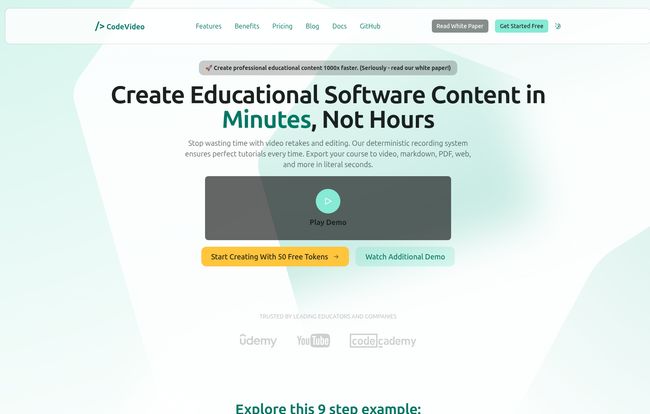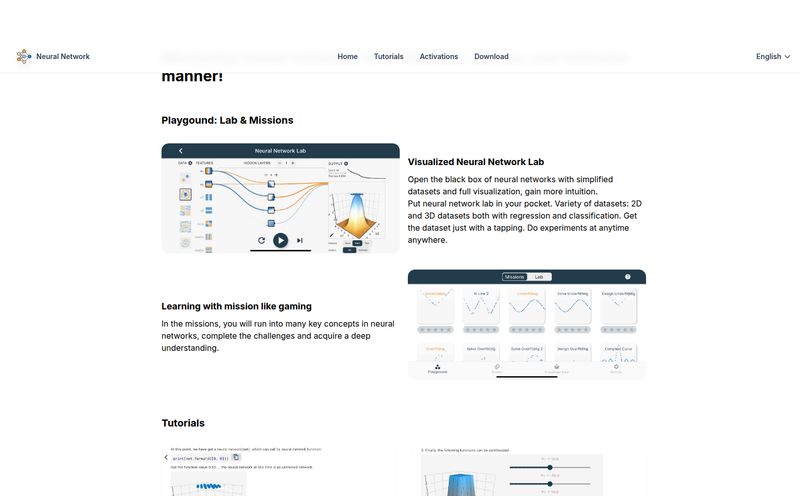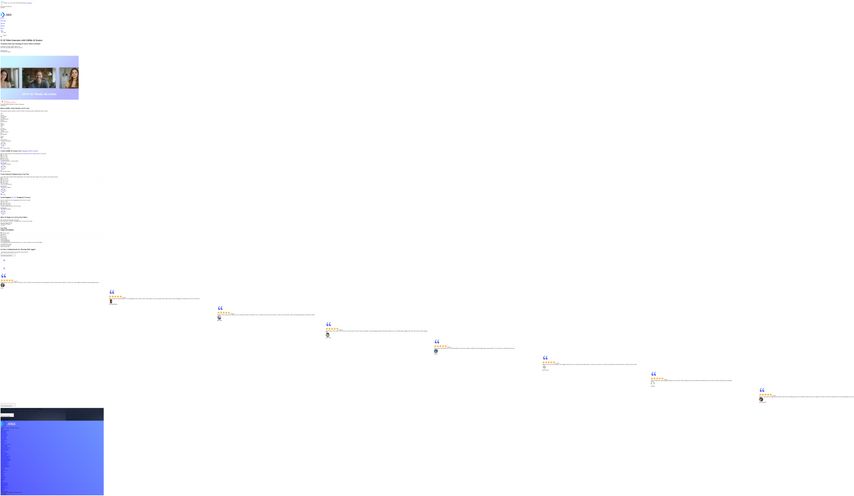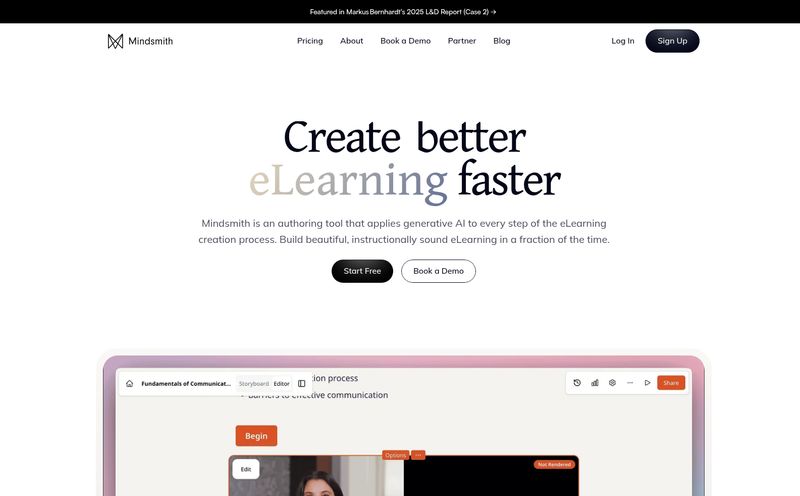Let’s have a little heart-to-heart. If you’ve ever tried to record a software tutorial, you know the pain. You fire up OBS or Camtasia, you clear your throat, and you hit 'record'. Five seconds in, a notification pops up. Cut. Take two. You stumble over a word. Cut. Take three. You mistype a line of code, backspace furiously, and sigh so loud the mic picks it up. Cut. And... scene.
I've been in the content creation trenches for years, and let me tell you, editing those videos is a soul-sucking vortex of time. For every 5 minutes of pristine, finished content, there's probably 45 minutes of mistakes, awkward pauses, and pure frustration on the cutting room floor. It's the part of the job nobody likes to talk about. Well, I just stumbled across a tool that isn't just trying to make the process better; it's trying to change the game entirely. It's called CodeVideo, and it’s… different.

Visit CodeVideo
So, What is CodeVideo Anyway?
First off, let’s be clear: calling CodeVideo a “screen recorder” is like calling a Tesla a golf cart. It technically moves you from A to B, but you’re missing the entire point. CodeVideo is a content generation framework. Instead of recording pixels on a screen, it records actions. Think of it like this: a traditional screen recording is a finished painting. If there's a mistake, you have to paint over it or start again. CodeVideo is more like the original sketch and a set of instructions. You can erase a line, add a new element, or change the color of the sky at any point, and then generate a perfect painting from those instructions. Every. Single. Time.
It’s built on a 'deterministic' system, a fancy term that means the output is guaranteed to be the same every time you run it. No more shaky mouse movements or typos. You define the steps—open a file, type this code, run this command—and CodeVideo executes it perfectly for the final output.
How CodeVideo Solves the Real Headaches
The real magic isn't just the perfect takes, it’s what this action-based approach allows you to do. The benefits here aren't just incremental improvements; they represent a totally different workflow.
Create Once, Distribute Everywhere
This is the killer feature for me. As an SEO guy, I'm obsessed with repurposing content. With a traditional video, you get… a video. If you want a blog post, you have to manually transcribe it, take screenshots, format the code. It’s a chore. With CodeVideo, you create your tutorial once, as a series of steps. Then, you just click a button to export it as a Video (MP4), a PowerPoint presentation (PPTX), a PDF guide, a Markdown file for your blog, or even a fully interactive HTML or React component. This is absolutely wild. The time savings are astronomical. You can create a video for YouTube, a companion blog post, and a downloadable PDF cheatsheet from a single source of truth. It's the content creator’s Swiss Army knife.
Flawless Takes and Easy Edits
Did you forget a step in the middle of your tutorial? In the old world, that meant a painful re-record. In CodeVideo, you just go to the timeline of actions and insert the step you missed. It's like editing a text document. Because it’s not a video but a script of events, you can tweak, reorder, and perfect the flow without ever hitting that dreaded record button again. This deterministic accuracy means what you show is exactly what you intended to show.
Built for Teams and Power Users
Beyond the basics, there's some real power under the hood. You can collaborate with team members on a tutorial in real-time, which is great for peer review or pair-creating content. For the more technically inclined, there’s a custom API. You can programmatically generate content, integrate it into your CI/CD pipeline for automated documentation updates, or build custom workflows. This pushes it beyond a simple tool and into a real platform.
The All-Important Question: What's the Price?
Alright, let's talk about the cost. CodeVideo uses a token-based system, which is pretty common for API-driven services. The more complex the export format, the more tokens it costs. I actually appreciate this model; you pay for what you use.
| Format | Tokens per Export |
|---|---|
| Markdown | 1 token |
| HTML | 2 tokens |
| React | 3 tokens |
| 5 tokens | |
| PPTX | 5 tokens |
| Video | 10 tokens |
They have a few pricing tiers to choose from:
- Pay As You Go: This is your entry point. You can buy tokens as you need them, starting at $2 for 10 tokens. They never expire, so it's perfect for occasional projects or just trying things out.
- Creator: For $49 a month, you get 500 tokens. This is the sweet spot for regular content creators, like YouTubers or bloggers. It brings the per-token cost down and gives you plenty of runway for creating multiple formats each month.
- CodeVideo Lifetime: This one's for the serious players. A one-time payment of $2000 gets you infinite generations for life. No subscriptions, no token counting. I also love the little note on their pricing page: it's a social experiment where for every lifetime license bought, the founder, Chris, takes a month off his day job to work on CodeVideo. You gotta love that kind of transparency and passion.
My Final Verdict: Who Should Use CodeVideo?
So, is CodeVideo the messiah of tutorial creation? It's close. I’d say it’s a game-changer for a specific but large group of people. If you're a developer advocate, a tech educator, a company creating software documentation, or a coding YouTuber/blogger, this tool could genuinely give you back days of your life every month. The ability to generate perfect, multi-format content from a single source is just too powerful to ignore.
Of course, no tool is perfect. The token-based pricing, while fair, means you need to be mindful of your usage, especially on the Pay As You Go plan. There's also a bit of a mental shift required to get used to the action-based editor versus a traditional timeline. And you are, for better or worse, working within the CodeVideo ecosystem.
But in my opinion, the pros far outweigh the cons. The time savings alone justify the cost for any serious creator. It turns the most tedious part of the job into one of the easiest.
Frequently Asked Questions about CodeVideo
- Is CodeVideo just another screen recorder?
- Absolutely not. It doesn’t record your screen. It records a sequence of actions (like typing code, opening files) and then generates pixel-perfect content from that sequence. This allows for easy editing and multi-format exporting.
- Can I edit my tutorials after creating them?
- Yes, and this is its biggest strength. You can easily insert, delete, or reorder any action in your tutorial's timeline without having to re-record anything.
- How does the token system actually work?
- You use tokens to 'pay' for each piece of content you export. Simple formats like Markdown cost very few tokens (1), while complex ones like video cost more (10), because they require more processing power to generate.
- Is the $2000 lifetime deal worth it?
- In my view, if you produce educational code content as a core part of your job or business, yes. Do the math: the Creator plan is about $600 a year. The lifetime deal pays for itself in just over three years, and then you have a powerful content engine forever. Plus, you get to support the founder directly!
- What if I make a typo while creating my action list?
- That's the beauty of it! You just go into that specific action step and edit the text. It's like correcting a typo in a Word document. The final exported video or document will be perfect, with no evidence of the original mistake.
Wrapping It Up
Look, the way we create and consume technical content is always changing. Tools that reduce friction and save time are the ones that stick around. CodeVideo feels like one of those tools. It takes the most painful, time-consuming part of creating software tutorials and makes it elegant and efficient. It's a clever solution to a problem I and many others have wrestled with for years. If you're in the business of teaching people how to use software, you owe it to yourself to at least give their free trial a spin. You might just get your weekends back.



